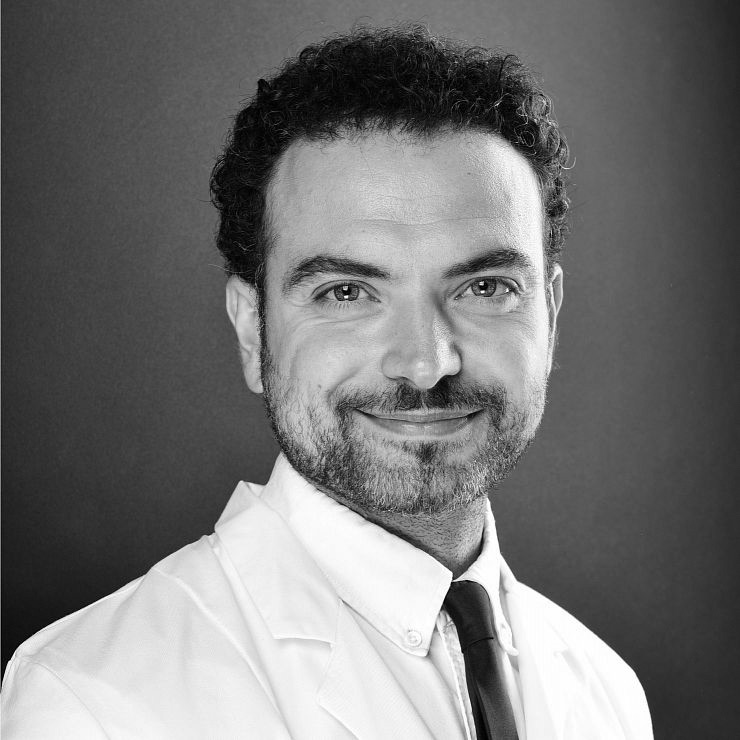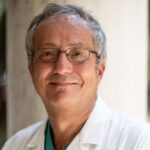Medical doctors and Surgeons
Pietramaggiori, the paradigm shift in plastic surgery
«Helping someone who has been imprisoned by his chronic pain is the greatest reward a plastic surgeon can experience»
Giorgio Pietramaggiori, MD specialising in plastic, aesthetic and reconstructive surgery, Privatdozent at the University of Lausanne
Medicine is an ever-evolving science. Throughout the years, surgical operations have become safer and more effective, and the people’s stance towards plastic surgery has changed, too. The recent awareness of patients and the new aesthetic standards have brought a paradigm shift.
Giorgio Pietramaggiori, MD specialising in plastic, aesthetic and reconstructive surgery, Privatdozent at the University of Lausanne, has studied in Italy, in the USA and in Switzerland before focusing on his career as plastic surgeon and on minimally invasive surgeries to treat migraines and persistent headaches like occipital neuralgia, proposing an innovative approach to surgery.
Innovative approaches to surgery

For most people, plastic surgery is the branch of medicine that deals with improving physical traits, and it has famously split the public in two sides. One thinks it is useless, the other believes has its merits, but this discourse always misses the true point: plastic surgery is a wide topic with many facets and in continuous evolution.
«In the last 10 years, plastic surgery noticeably changed, it has been stretched to the extreme, especially when talking about aesthetic surgery» MD Pietramaggiori explains. «Aesthetic treatments are medical treatments, and they should not be trivialised» he continues. Instead of offering to his patients “standard” surgeries, Pietramaggiori prefers to propose procedures that improve the natural beauty of people, highlighting their individuality. «This is our philosophy» he states.
However, the most innovative specialty of Pietramaggiori is his focus on surgeries that treat and cure chronic pain such as persistent migraines. «Half of our procedures are tied to my specialisation. We go from head to toes, from headaches to post-traumatic pain affecting limbs» he continues. Sometimes this pain is resistant to pharmacological treatment, and one solution resides in surgery to the nerves. But how does this kind of plastic surgery work?
Treating chronic pain with plastic surgery
Plastic surgery to treat chronic pain is a relatively new practice. «First studies date back to 20 years ago, but today it is much more refined. We are famous for the minimally invasive procedure. We found out that the first techniques, which were indeed very effective, could be improved by reducing the secondary damage to nerves and other important structures» Pietramaggiori reveals.
The success of minimally invasive surgeries made the clinic Global in Lausanne famous in all of Europe. «When I was studying maxillofacial surgery I used to meet many patients with treatment-resistant headaches» Pietramaggiori tells. «It was then that I ran a research and found out that a colleague from the United States had tried a procedure to help these patients. I decided to go there and study it, and now we have patients and colleagues that come to us from all over the world.»
Treatment-resistant chronic pain affects about 20% of people in the world, and sometimes they can be completely debilitating. Plastic surgery can help patients that have been suffering for years to finally go back to a normal life. «Helping someone who has been imprisoned by his chronic pain is the greatest reward a plastic surgeon can experience» Pietramaggiori claims. «Those who go back to living a normal, full life and start going outside again sometimes come back to us for a touch up, and this is so gratifying.»
Breast surgery: a paradigm shift
In the Lausanne centre, Pietramaggiori found that breast surgery has been facing a paradigm shift. «We have many more requests of ablation of breast implants compared to primary breast augmentation» the surgeon explains, saying that it is the inverse compared to previous years. Many women, after years with breast implants, decide to have them removed and sometimes to have some secondary procedures carried out.
«Ablation of implants must always maintain certain characteristics of the breasts» Pietramaggiori adds. «A surgery that is commonly associated to ablation is that of fat transfer, where fatty tissue is removed with a procedure similar to that of liposuction to then inject it where it is necessary, for example in the décolleté area». This procedure has become way safer as technology improved, also thanks to the increased knowledge about the role of the lymphatic system in the healing of scars. «A post-operative garment improves lymphatic circulation after surgery, reducing the time it takes for the scars to heal and minimising complications.»
The surgeon wraps up explaining that it is pivotal to have a knowledge that is as thorough and up to date as possible on every aspect of plastic surgery, in order to offer the best service possible to patients. From aesthetic surgery to minimally invasive surgery to treat migraines, a good doctor has to have perfect knowledge of anatomy and surgery, and also of pain therapy if they work in the field of chronic pain. «We need to be comfortable with every current therapy and treatment. We need to properly assist the patients and follow them». Only then can surgery advance and offer a service that improves the life of people.




































